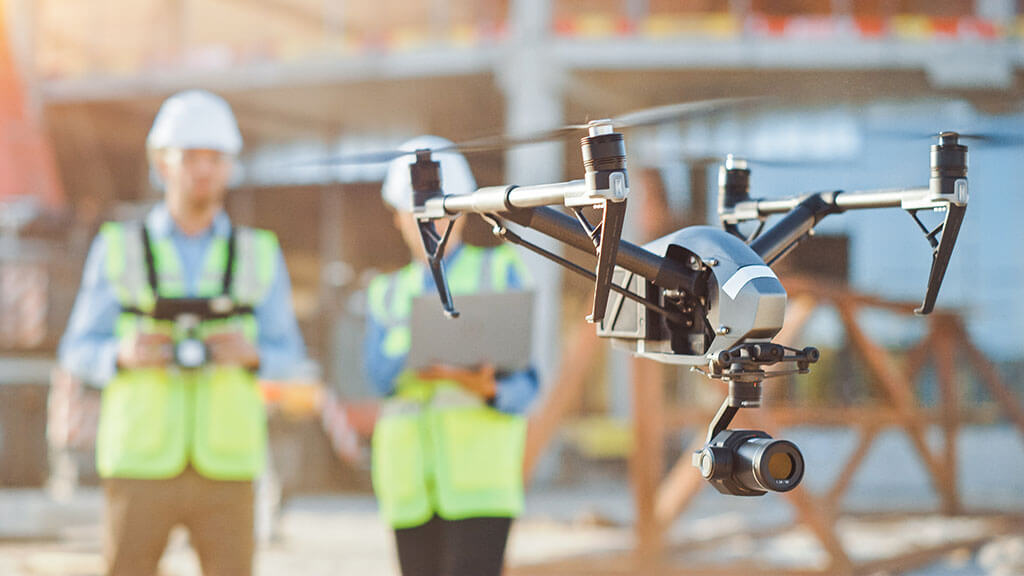Insights
Four areas of opportunity to improve the field workforce
4 minutes
14th December 2021
Share this article:
Digital technology is enabling evolution across field workforces. Lucy Clayton, Business Thought Leadership at Virgin Media O2 Business, looks at four areas ripe for improvement – productivity, operational efficiency, customer service and health and safety.
Field work is going through a period of evolution. Enabled by digital technologies and accelerated by the disruption of the pandemic, there are multiple opportunities for improvement. And these opportunities benefit organisations and their field based workers.
To date, most news headlines and focus has been on the dramatic changes experienced by desk-based workers, many of whom worked remotely during the pandemic. However, we recently published our insights paper ‘Is your field force evolving to meet current needs?’ to spotlight the changes field workers are experiencing too.
In a previous post, we explored the societal, organisational and personal drivers that are stimulating the changes in field work. In the second of three articles covering valuable nuggets from the report, this blog looks to delve into those areas where improvement is happening.
Individual field worker productivity
Small changes to the way we work can make a big difference, saving time and increasing output. Technology is enabling each field worker to improve their productivity, by eliminating manual paperwork and speeding up workflows through digitisation, while also ensuring close collaboration between remote teams to support skills sharing as well as a feeling of “team” to support well-being. The report cites a field force of 5000 increasing their work rate by 20%, with a corresponding increase of 9% in customer appointments met.
Collectively, this helps drive a healthy performance culture through a “virtuous circle”. Using metrics. Making changes. Seeing an up tick in productivity. Everyone experiencing the benefits.
Operational efficiency
When technology is implemented strategically and in a co-ordinated way, it delivers more than just improved productivity. It can revolutionise field force operations, like when Tesla in the UK set up a mobile technician service, avoiding the fixed costs of premises and providing a more responsive service for customers.
That’s a clever idea, but here’s the true genius bit. The combination of information and photos from a customer self-diagnosis app and digital data coming from the car itself means mobile engineers already have a good idea of a problem before they arrive. They turn up to customer appointments with the right knowledge, parts and equipment.
Here, mobile connectivity, increasingly enabled by 5G, is the critical factor in improving operational efficiency. Delivering data from Internet of Things (IoT) sensors to enable field force communication and support interaction with customers. From and to almost any location.
Customer service
These technologies are having a very tangible impact on customer service. When the engineer arrives well-prepared to fix your car. When the delivery turns up exactly when they said they would. These good experiences are increasing customer and brand loyalty.
The report is peppered with other examples from specific sectors and services. Social care is currently in the news, and is a focus for future improvement. Navigil’s ‘wellbeing wristwatch’ takes advantage of mobile connectivity to enable elderly people or those with dementia to live more independently for a longer period. The watch monitors various indicators, including safe zones at home, and allows field care workers to make the right interventions when they need to.
Firefighters in the US are also taking advantage of connectivity. An augmented reality (AR) headset and computer vision embedded into their safety helmet is providing more information, so they can find people trapped in dark places. That’s helping save lives.
Health and safety
Some of us groan when health and safety is mentioned. But it’s critical for field force organisations. The duty of care to keep employees safe and the need to comply with regulations are key considerations. The pandemic has increased the focus on employee wellbeing. And technology is helping make improvements across the board.
An inspiring example of this is Tizen smartwatches. These are being used for real-time communication with drivers during emergencies. Their fatigue monitoring function is today helping prevent drivers falling asleep at the wheel, keeping everyone safe.
Automation, connectivity and robotics are also presenting opportunities to free employees from hazardous work. It’s startling that 90% of mining accidents are caused by human fatigue and error. No wonder remote controlled and autonomous vehicles and machinery are increasingly being deployed.
What’s exciting is that we’re just at the start of the journey. Digital innovation and mobile connectivity are going to keep on changing field force work for the better. And all businesses can take advantage of this as the barriers for entry in terms of cost and implementation get lower.
To find out if your field force is evolving to meet current needs, dive into our new paper.
Want to speak to one of the team?
call 0800 064 3790

